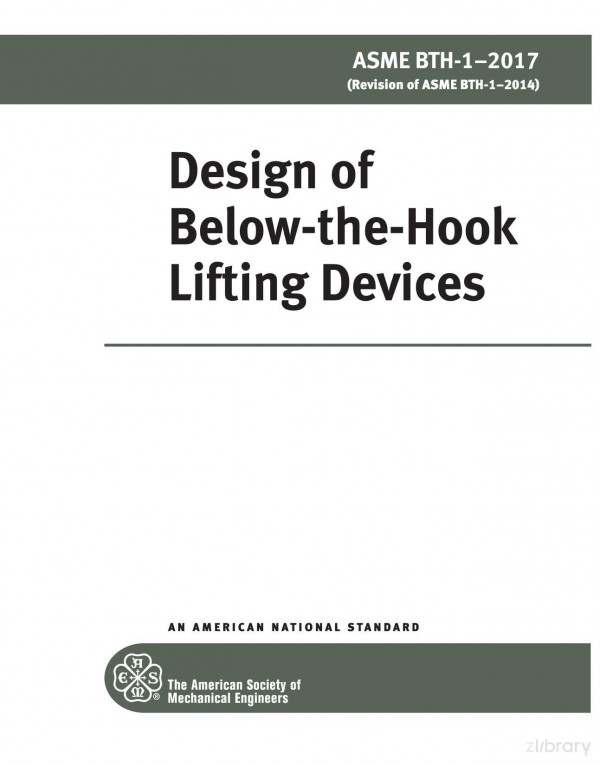(Ebook) ASME BTH-1-2017 Design of Below-the-hook Lifting Devices by American Society of Mechanical Engineers ISBN 9780791871355, 0791871355
There have been many formal requests for interpretation of the limited structural design criteriastated within ASME B30 .20 , Below-the-Hook Lifting Devices, a safety standard . As a consequence,industry has for quite some time expressed a need for a comprehensive design standard forbelow-the-hook lifting devices that would complement the safety requirements of ASME B30 .20 .All editions of ASME B30 .20 have included structural design criteria oriented toward the industrialmanufacturing community requiring a minimum design factor of 3 , based on the yield strengthof the material; recent editions have also included design criteria for the fatigue failure mode .However, members of the construction community expressed the need for design criteria moresuitab le to their operating conditions, including a lower design factor, and the necessity to addressother failure modes such as fracture, shear, and buckling, and design top ics such as impact andfasteners .A Design Task Group was created in 1 997 to begin work on a design standard as a companiondocument to ASME B30 .20 . The ASME BTH Standards Committee on the Design of Below-theHook Lifting Devices was formed out of the Design Task Group and held its organizationalmeeting on December 5 , 1 999 .ASME BTH-1 –2005 , Design of Below-the-Hook Lifting Devices, contained five chapters : Scopeand Definitions , Lifter Classifica t ions , Structural Design , Mechanical Design , and ElectricalComponents. This Standard, intended for general industry and construction, set forth two designcategories for lifters based on the magnitude and variation of loading, and operating and environmental conditions. The two design categories provided different design factors for determiningallowable static stress limits. Five Service Classes based on load cycles were provided . The ServiceClass establishes allowable stress range values for lifter structural members and design parametersfor mechanical components.…
*Free conversion of into popular formats such as PDF, DOCX, DOC, AZW, EPUB, and MOBI after payment.


